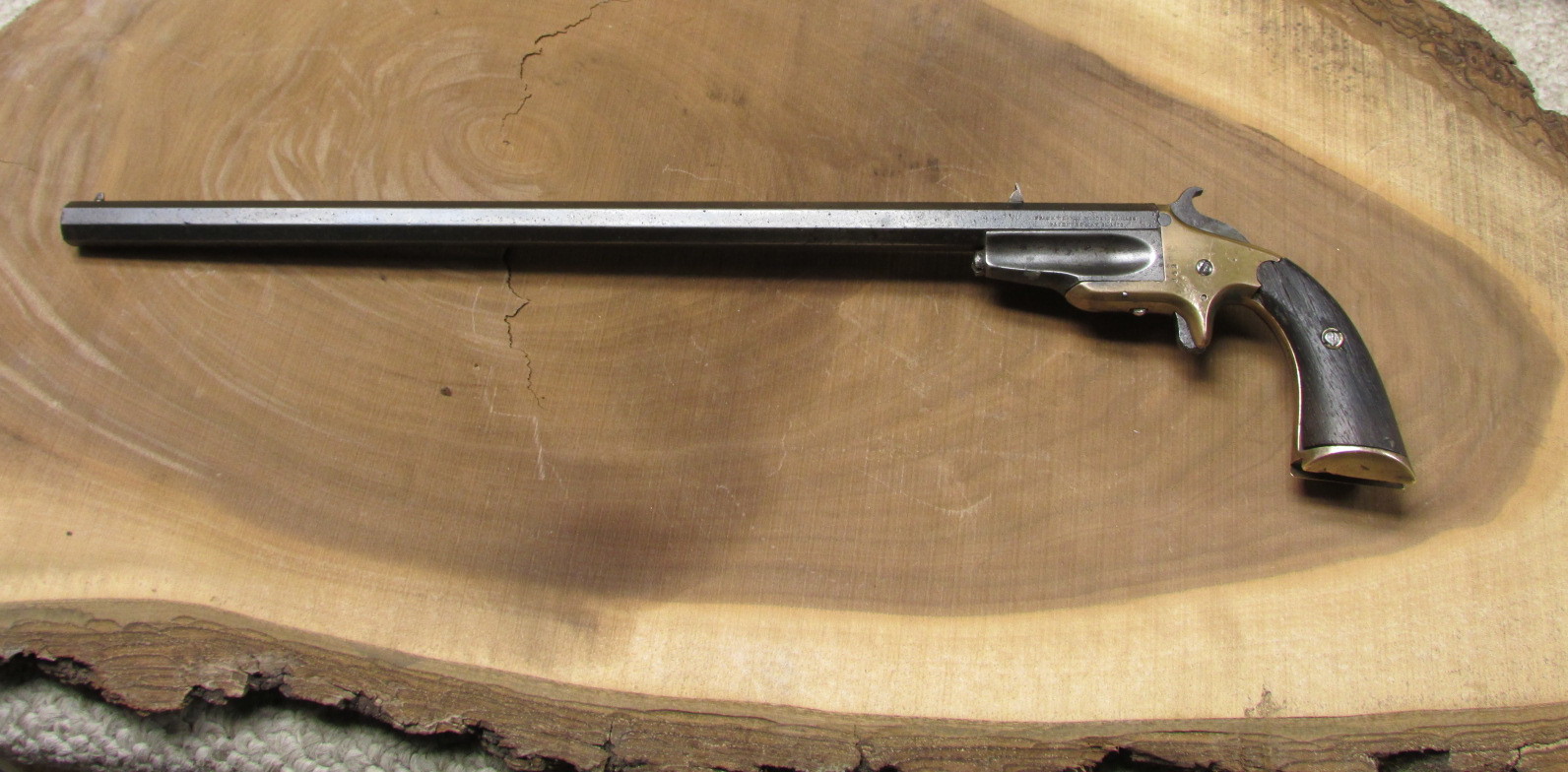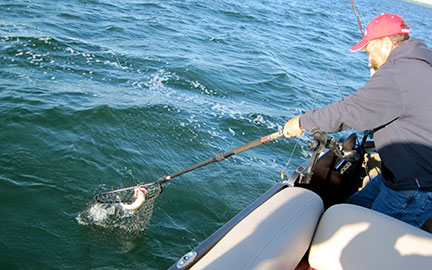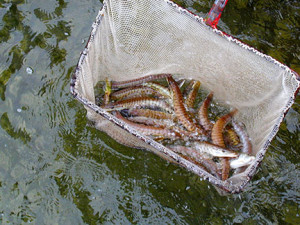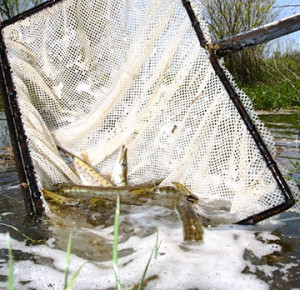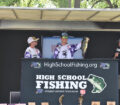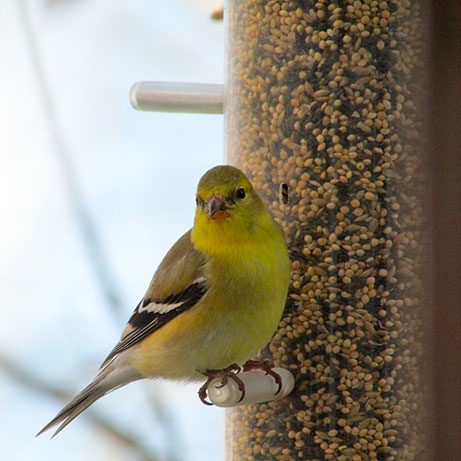By Steve Weisman
The local chapter of Upper Great Plains Muskie Inc. Chapter 29 (Iowa Great Lakes), along with a donation from the national chapter’s Hugh Becker Foundation and the Heartland Muskies Inc. chapter from Clear Lake, have donated a combined total of nearly $15,500 to help the Iowa Department of Natural Resources and Iowa State University fund a study of yearling muskie survival on Big Spirit Lake. Once muskies hatch they are held in the hatchery the first summer and then sent to the Lake Rathbun Hatchery in September and held in cement lined ponds until the following spring, when they have reached 10-12 inches in length.
Larry Perry, President of the local chapter says, “This is the first study of this type, and we all feel it will provide excellent data that we have never had before. Our local club donated $6,500, the Hugh Becker Foundation donated $7,000 and the Heartland club from Clear Lake donated $1980.”
Jonathan Meerbeek, Iowa DNR Research Biologist at the Spirit Lake Hatchery, believes this study will have a profound impact on the ability of the fisheries personnel to increase the survival of yearling muskies and help more of them to reach the 30-inch length (4 years). “Currently we really don’t have the data to determine what happens to these fish once they are released into the lake. Normally we don’t see these fish until they are around four years of age. At that point, they begin to appear in our nets and we can track them after that with PIT tags.”
Meerbeek notes that there is concern about the mortality between the time they are released as 10 to 12-inch yearlings and when they next are able to get data on them at about year four. “This funding gives us the opportunity to purchase 64 telemetry tags, along with a receiver and antenna to monitor these fish during those first crucial months.”
The study
Later this spring, the study will begin when 64 muskie yearlings will be fitted with radio telemetry tags that will allow both DNR and Iowa State University personnel to monitor and track the movements of these fish through the first four months of life in Big Spirit. For this year, Iowa State University has provided the receiver and antenna to be able to track the fish.
“We want to know if simple changes to our stocking techniques can improve survival of yearling muskies,” says Meerbeek. “All of these yearlings will have wintered over at our Lake Rathbun facility, and will be brought here in special climatically controlled tanks in May.” Once here the yearlings will be stocked under three different scenarios.
“The first group will be stocked in Hales Slough once they arrive. Hales Slough has been the DNR’s traditional stocking location because of the favorable yearling habitat conditions there. However, one of our concerns is that once released, they have a tendency to just hang around that area. With the telemetry tags, we will be able to track them and better see what happens to them. We will learn quickly whether the stress of the trip and nearby predators take their toll.”
The second group will be held at the hatchery for 24-48 hours before they are stocked. “By doing this, we will be able to track a group of yearling muskie that we have tried to alleviate stress from being transported.”
The third group of yearlings will be taken out off shore in Angler’s Bay. The DNR wonders if stocking yearlings off shore may reduce predation risks from both fish and bird predators. “We will take these fish out 200 yards or so from shore. We will then track these fish and see what their survival is compared to the other two groups.”
The tags themselves will last 3-4 months, which means they will be easily tracked through the summer. “Our monitoring will be very intense for the first two to three weeks after the stocking occurs.” Fish will be tracked daily up to two weeks post-stocking and tracked weekly until August 31. Tracked individuals will be considered dead if no movement is detected in four consecutive encounters (i.e., initial survival estimate).
Perry says the local members of Upper Great Plains Muskie Inc. Chapter 29 are excited to be part of the study. “The fact that we were able to get enough money to get three different control groups is very important. This will give us data that we have never had before, and at the same time, we will be able to learn more about what is going on in the muskie habitat and the lake itself. We also hope that what we learn from this study might be used in other parts of the country.”
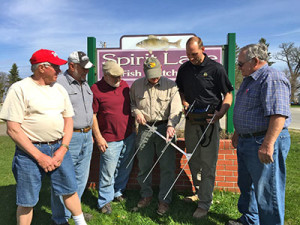
(photo by Steve Weisman) Fisheries Biologist Jonathan Meerbeek (second from right) shows members of the Upper Great Plains Muskie Inc. Chapter 29 the antenna and receiver that will be used to track yearling muskies. Club members include (L to R) Leo Kofoot, Larry Perry, Tom Gude, Steve Horswell and Mark Mitchell.
[wwcAmzAffProducts asin=”B01H2D450S,B00B7227U6,B00C0R4RLE,B01A5IB5SW,B00019NP16,B004UVRYDG,B00DN7FQ8S,B00XZNFX4W,B00B722954,B00DN7BS4E,B00DN7CCIK,B00B722A3K,B00HLB2TKK,B004D34EQ6″][/wwcAmzAffProducts]

